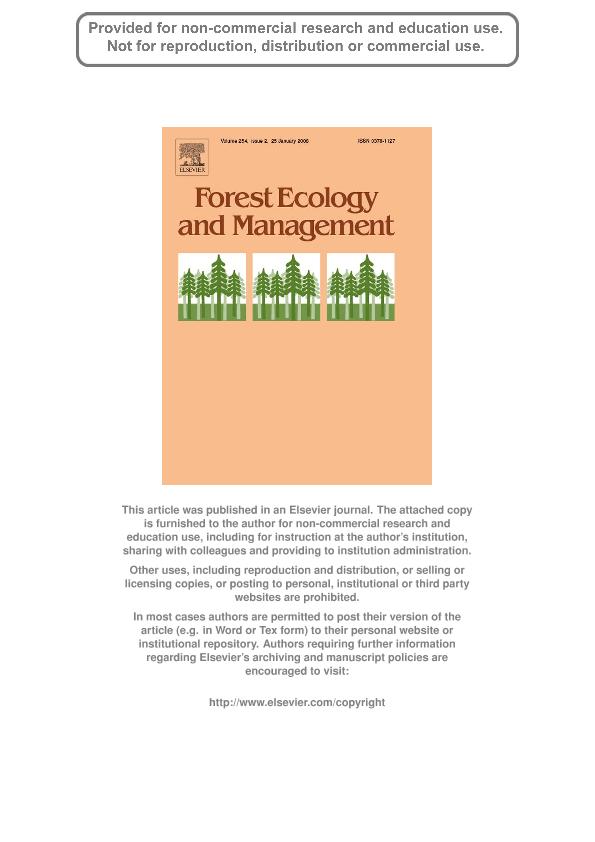Artículo
Polylepis australis’ regeneration niche in relation to seed dispersal, site characteristics and livestock density
Fecha de publicación:
09/2007
Editorial:
Elsevier Science
Revista:
Forest Ecology and Management
ISSN:
0378-1127
Idioma:
Inglés
Tipo de recurso:
Artículo publicado
Clasificación temática:
Resumen
Polylepis australis (“tabaquillo”) grows in the high mountains of central Argentina, where we set up 76 square study plots of 900 m2. To determine dispersal distance, we distributed 6 seed traps per plot in and around 20 plots. To determine the best site characteristics and livestock stoking rates, at two river basins differing in historic stocking rates, we analyzed the presence of seedlings in 56 plots and recorded topography, vegetation types and indicators of livestock activity. We also measured microsite characteristics in a sample of 32 comparable pairs of 1 m2 quadrats, with and without seedlings. Maximum recorded dispersal distance of P. australis seeds was 6 m, and seedlings were found no more than 10 m from seed trees. The numbers of seedlings and seed trees were 3.5 and 4 times higher, respectively, in the basin with less livestock. At the 900 m2 plot scale, a Poisson regression indicated a positive relationship between seedling number and P. australis canopy cover. At the quadrat scale (1 m2), seedlings were found in quadrats with significantly lower evidence of soil erosion than comparison quadrats without seedlings. We conclude that the main limitations to recruitment are short seed dispersal distances, lack of seed trees and extreme soil erosion. Management should therefore aim at preserving seed trees and reducing livestock density to prevent erosion.
Palabras clave:
Forest Cover
,
Erosion
,
Mesohabitat
,
Microsite
Archivos asociados
Licencia
Identificadores
Colecciones
Articulos(IIBYT)
Articulos de INSTITUTO DE INVESTIGACIONES BIOLOGICAS Y TECNOLOGICAS
Articulos de INSTITUTO DE INVESTIGACIONES BIOLOGICAS Y TECNOLOGICAS
Articulos(IMBIV)
Articulos de INST.MULTIDISCIPL.DE BIOLOGIA VEGETAL (P)
Articulos de INST.MULTIDISCIPL.DE BIOLOGIA VEGETAL (P)
Citación
Torres, Romina Cecilia; Renison, Daniel; Hensen, Isabell; Suarez, Ricardo; Enrico, Lucas; Polylepis australis’ regeneration niche in relation to seed dispersal, site characteristics and livestock density; Elsevier Science; Forest Ecology and Management; 254; 2; 9-2007; 255-260
Compartir
Altmétricas




